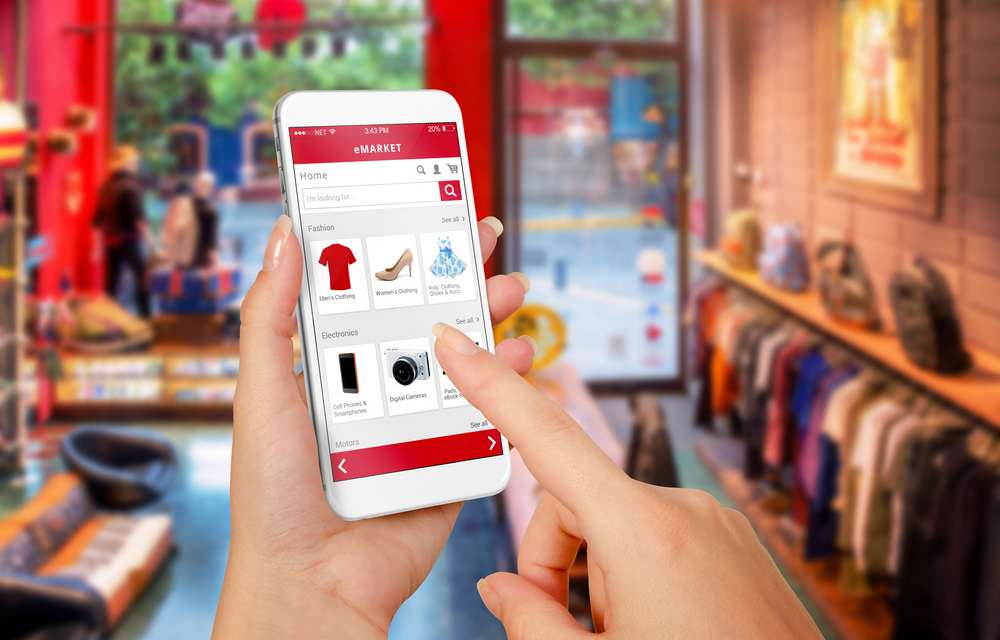Business
How in-store tech is changing the high street

Online shopping has soared in recent years, and the consensus is that the high street is struggling as a result. But new data, oddly, shows the opposite. In 2015, weekly shopper visits to the high street increased by 40%, and the prediction is for it to increase to 44% by 2018. What’s changing for our high streets?
Well, as online shopping takes care of shifting stock, retailers can change the space in their high street stores to more of an experience. With shopping a more social activity now than a spending one, a store’s physical space becomes more about representing the brand than selling the product directly. To explore this phenomenon further, retailer of going out dresses, QUIZ Clothing, looks into the high street.
The tech we love
Retail technology originally stemmed from the internet and e-commerce, which has been embraced by most brands by now.
But, recent research still indicates that people value brick-and-mortar stores — in fact, 81% of UK customers said that the physical stores were vital to the shopping experience. So, when it comes to improving the high-street and implementing in-store technology, what should retailers be getting involved with?
Customers are taking well to kiosks in-store. However, not all retailers are getting on board — 66% of those surveyed in one study said that they were yet to encounter artificial intelligence in-store. Do retailers realise the huge potential of this type of technology? In fact, 60% of consumers are attracted to the idea of using them to find products that they weren’t aware of before. As an example, in QUIZ’s digital stores, an in-store kiosk enables visitors to browse the full collection (even if some products aren’t available in-store) and order them to their homes or local store.
Staff members can also use technology to help improve their service towards customers. One way to do this is by providing employees with handheld iPads or other smart tablets. This allows staff to find the answer to a query, check a product’s availability and place orders for the customer without having to use a fixed computer. This can improve the customer’s experience and help build a stronger brand-to-customer relationship.
Augmented reality is getting into retail too. This can help the customer with their purchase decision and help them visualise themselves with the product. Although this can be made available through an app, there are also ways to introduce it in-store. In a fashion store for example, a smart mirror can allow customers to dress themselves in different outfits without actually trying them on. Similarly, in a furniture store, visitors can upload a photo of their home and try out pieces of furniture to see if it would suit their rooms.
Increasing brand loyalty
Technology in-store can not only be helpful, but brand-effective too. It’s possible that having in-store technology in a physical shop can make a brand more attractive to customers, and potentially a better option over competitors. Some retailers are recognising this too as one report suggested that 53% of retailers view investments in new automations and appliances in-store as vital to keep up with their competitor activity.
In-store technology can also enhance the whole customer experience greatly. One study revealed that 46% of those surveyed said that a positive experience due to well-functioning technology increases their brand confidence.
Things to watch out for
As we’ve all experienced, technology can be a little fickle. This can be frustrating and add time onto a customer’s visit which may result in a negative experience.RetailWeek found that two thirds of those surveyed had experienced problems and breakdowns in-store with the technology. Unfortunately, this then affects sales — one third of customers said that they were unable to complete their transactions because of the technology difficulties.
Sadly, poor experiences with in-store tech not working as it should can cause customers to leave and not come back. Retailers must keep software and technologies updates and well-maintained to avoid issues like this.
Along the same lines, overly-complicated technology can be off-putting. This could make people feel excluded too — in-store tech should be simple to use, and visitors should be accompanied when using it if it’s more complex.
In-store technology is certainly becoming a popular fixture on the high street. Although customers are happy to shop online, they also enjoy shopping as a leisure activity and appreciate an interactive experience when doing so.
Sources
https://www.pwc.com/gx/en/industries/retail-consumer/consumer-insights-survey.html
https://internetretailing.net/themes/themes/quiz-brings-digital-into-westfield-stratford-store-15243
https://www.fool.com/investing/2018/07/06/can-in-store-technology-slow-the-retail-apocalypse.aspx

-
Business4 days ago
docStribute appoints ex-Group CIO of Newcastle Building Society as Non-Executive Director
-
Technology4 days ago
How to Use AI to Optimize Customer Relationships
-
Business4 days ago
What Every Small Nonprofit Needs to Know About Form 990-N
-
Finance4 days ago
stc Bahrain and Aleph Zero Partner to Advance Blockchain DePIN Across the Gulf Region







